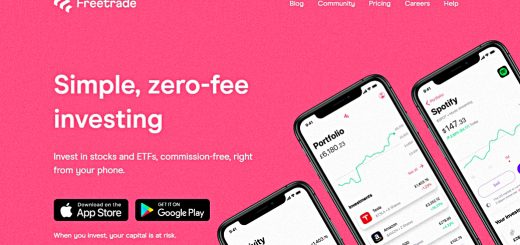US ETFs in the UK

Today’s post looks at trading US ETFs in the UK.
Contents
US ETFs
The US ETF market has always (since its launch in 1993) been more developed than that in the UK, and that is not likely to change.
Here in the UK, ETFs are a minority taste – the big fund platforms (HL, AJ Bell, Vanguard) push the historically more lucrative OEICS.
- But for DIY investors, the low costs, real-time pricing and wide range of underlying asset classes and themes make ETFs attractive.
The recent adoption of low-cost phone trading apps by younger UK investors has led to renewed interest in ETFs, but the ones which have attracted the most attention are US-based.
MiFID, PRIIPs, UCITS and Brexit
US-domiciled ETFs were pulled by UK platforms in 2018 when the EU passed the PRIIPs (Packaged Retail Investment and Insurance Products) regulations as part of MiFID II (Markets in Financial Instruments Directive 2).
- PRIIPs require fund providers (including ETFs) to produce a Key Information Document (KID) that in theory enables investors to compare the risks, rewards and costs of different investment products.
In practice, KIDs are hopelessly complicated and almost nobody read them.
EU-domiciled ETFs follow UCITS (Undertakings for the Collective Investment in Transferable Securities) regulations and (mostly) had their KIDs ready.
- US ETFs are largely aimed at the US market and so producing EU-approved information at their own cost is not a priority for them.
Similarly, EU ETFs aimed at institutional investors were in no hurry to produce KIDS.
- If you hold an ETF without a KID, you can keep it or sell it, but you can’t buy any more.
Each EU country implements PRIIPS on its own terms, so it’s possible that an EU broker like DeGiro might support US ETFs
- I haven’t investigated this yet.
And of course, the UK has now completed Brexit and so is free in theory to ignore PRIIPs.
- But since we have competitive advantages in this sector and therefore want a level financial playing field across Europe, this seems unlikely.
Brokers
There are two basic ways around PRIIPs:
- Qualify as a professional or sophisticated investor
- Use a derivative instrument
As for EIS, VCTs and crypto derivatives, an exemption exists for sophisticated and professional investors to access these restricted instruments.
- Qualification depends on your broker accepting your self-certification but is usually based around some combination of income, wealth, professional experience and recent trading activity.
Even then, you need to find a broker who allows you to trade US ETFs – I’m not aware that any of the popular brokers do this – and whose terms for trading US stocks (FX charges, say) are acceptable.
- The two brokers I use for US stocks are Trading 212 and Stake.
The latter explicitly allows you to certify as sophisticated and trade US ETFs, but you need $30K in your account.
- As Stake only recently dropped their monthly account charge, my account is new and won’t hit $30K for another few weeks.
Here’s the Stake definition of a “Stake Accredited Investor”:
EU Retail clients must have at least $30K USD of assets in their Stake account and provide evidence that they satisfy at least two of the following criteria:
- Number of Trades: During the last 12 months, there were at least forty (40) trades (including at least 1 per quarter) in stocks or ETFs or similar products, in a Stake account or another brokerage or share dealing account;
- Portfolio Value: The Client holds a portfolio of financial instruments (including cash) that exceeds EUR 500,000 (or equivalent);
- Employment History: The Client works or has worked in the financial sector for at least one year in a professional position that requires knowledge of products it trades in.
Stake reserves the right to see brokerage statements to back up 1 and 2 and an employer letter for number 3.
Derivatives
The three types of derivate that UK DIY investors might come across are:
- Spread bets
- CFDs (contracts-for-difference), and
- Options
Most people I know stick to spread bets, but I’ve noticed that a lot of younger investors have been using CFDs.
- Spread bets are tax-free, so more attractive to me, but I could be interested by CFDs if the range of available ETFs was significantly wider.
Options are potentially useful, but quite unlike regular stock purchases and so are best left to those with plenty of time to study.
- They are in any case difficult to access in the UK and are only offered by a few specialist brokers.
I make spread bets through IG, and they offer many US ETFs on their platform.
Data
The next issue is data.
- I rarely make a purchase without looking at the technicals, and I usually run some form of momentum screen across any stock (or ETF) ideas.
The idea behind this is to use active trades to lower the volatility of my large passive core portfolio, which is mostly in global stocks.
I have two sources of data for this work:
- Stockopedia – paid, but for the UK only (( Other regions are available at extra cost, but because of tax considerations, such stocks are unlikely to ever form a large part of my portfolio ))
- Google Sheets (the GoogleFinance function) – free, and international
This brings us to US Exchanges.
- Whether GoogleFinance provides the historical data for my technicals depends on which US exchange the ETF in question is listed.
The US ETFs that have caught my attention are listed on no fewer than six US exchanges:
- NYSE
- NASDAQ
- NYSEARCA
- Previously known as ArcaEx (Archipelago Exchange), this merged with the New York Stock Exchange in 2006.
- CBOE
- BATS
- A global stock exchange operator based in Lenexa, Kansas, with additional offices in London, New York, Chicago, and Singapore.
- OTCMKTS
- OTC Markets Group provides price and liquidity information for almost 10K over-the-counter securities.
Of these, Google provides data for all except CBOE.
Systematics
Let’s have a look at some of the ETFs I’m interested in.
I’m a big fan of systematic investing, and some of my favourite bloggers and writers in this areas fun their own ETFs.
- Alpha Architect and Meb Faber are the two obvious examples.
AA has five ETFs on BATS:
- Quant Value QVAL
- Quant Momentum QMOM
- International Quant Value IVAL
- International Quant Mom IMOM
- Value Momentum Trend VMOT
Cambria has ten ETFs that are unfortunately listed on CBOE:
- Foreign S’holder Yield FYLD
- EM S’holder Yield EYLD
- Global Value GVAL
- Global Momentum GMOM
- Global Asset Allocation GAA
- US Tail RIsk TAIL
- Global Tail RIsk FAIL
- Trinity ETF TRTY
- Cannabis ETF TOKE
- Global Real Estate BLDG
Cambria also has a single ETF listed on BATS:
- Shareholder Yield SYLD
Fan favourites
The ETF that kicked off recent UK interest in US ETFs is probably ARK innovation, a tech fund with incredible recent performance, managed by Cathie Wood.
ARK actually has six ETFs, split equally across BATS and NYSEARCA.
These three are on BATS:
- Ark Robotics ARKQ
- Ark Genomics ARKG
- Ark Space ARKX
And these three are on NYSEARCA:
- Ark Fintech ARKF
- Ark Innovation ARKK
- Ark Internet ARKW
Crypto
There are a couple of crypto trusts, both on OTCMKTS:
- Osprey bitcoin trust OBTC
- Greyscale bitcoin trust GBTC
Miscellaneous
Here are some more interesting ETFs from NASDAQ:
- Gig Economy GIGE
- Semiconductors SMH
- Space Tech UFO
And some from BATS:
- Human Factor US AVDR
- Euclid Capital Growth (Trend) EUCG
- Internet Giants OGIG
And quite a long list from NYSEARCA:
- Guru Index GURU
- Managed Futures WTMF
- Betting & iGaming BETZ
- US Cannabis MSOS
- Social Sentiment BUZZ
- U.S. Carbon Transition Readiness LCTU
- Ex-US Carbon Transition Readiness LCTD
- Solar TAN
- Moonshot Innovators MOON
- Next Gen SPACs pre-IPO SPCX
- Next Gen SPACs SPAK
- Growth Index VUG
- KLD 400 Social ETF DSI
- Volatility & Inflation Hedge IVOL
I think that’s enough to be getting on with for today – we’ve looked at the mechanics of investing, and at more than forty of the more interesting US ETFs.
- I’ll be back with a follow-up article once I get around to actually trading some of these instruments.
Recommendations for other interesting US ETFs are very welcome.
- Until next time.
















